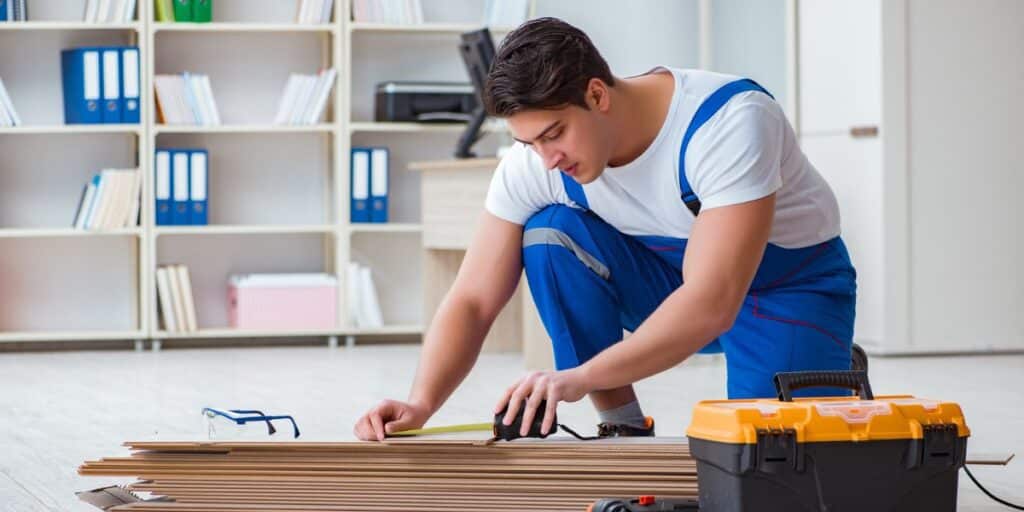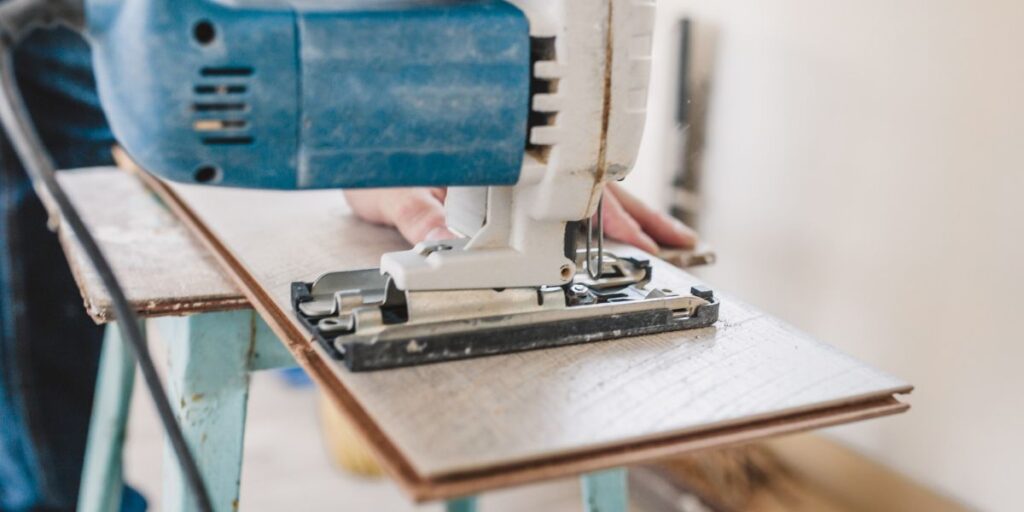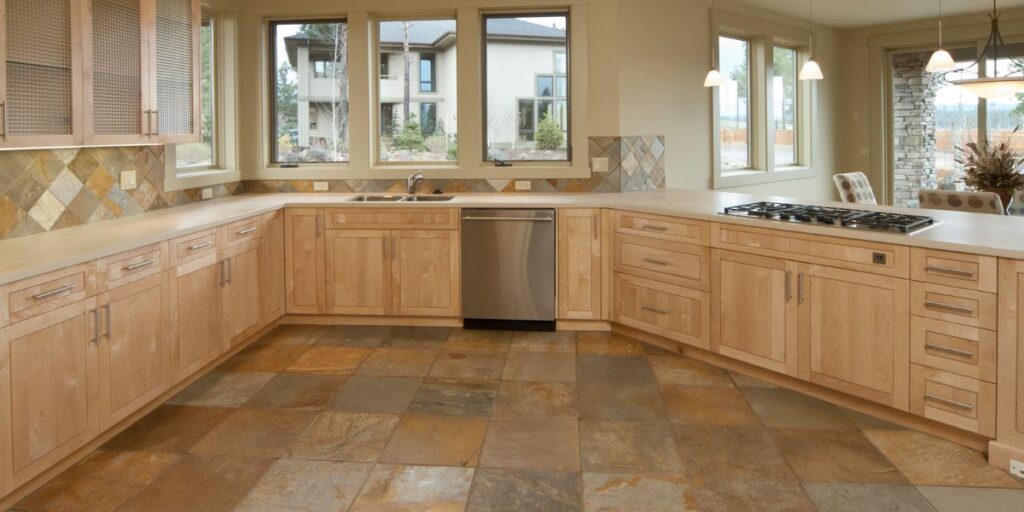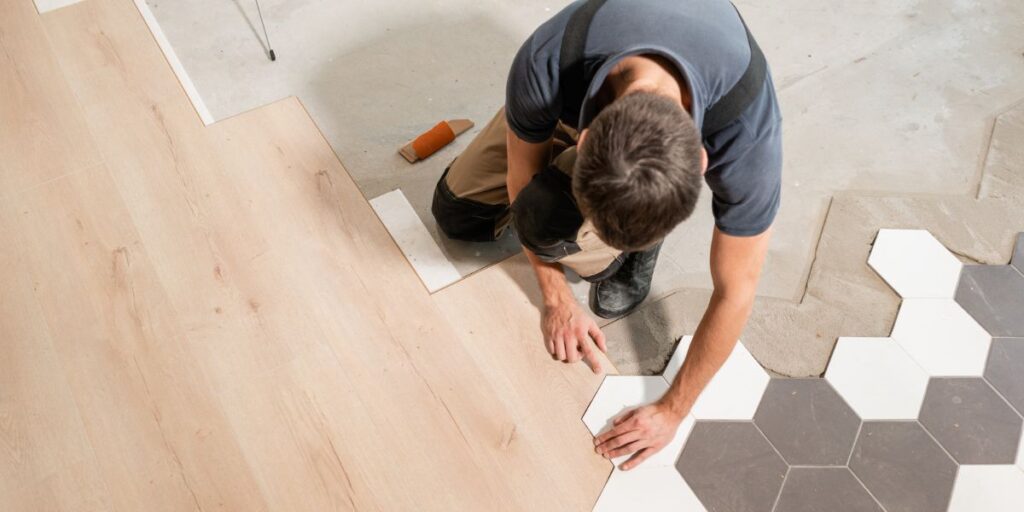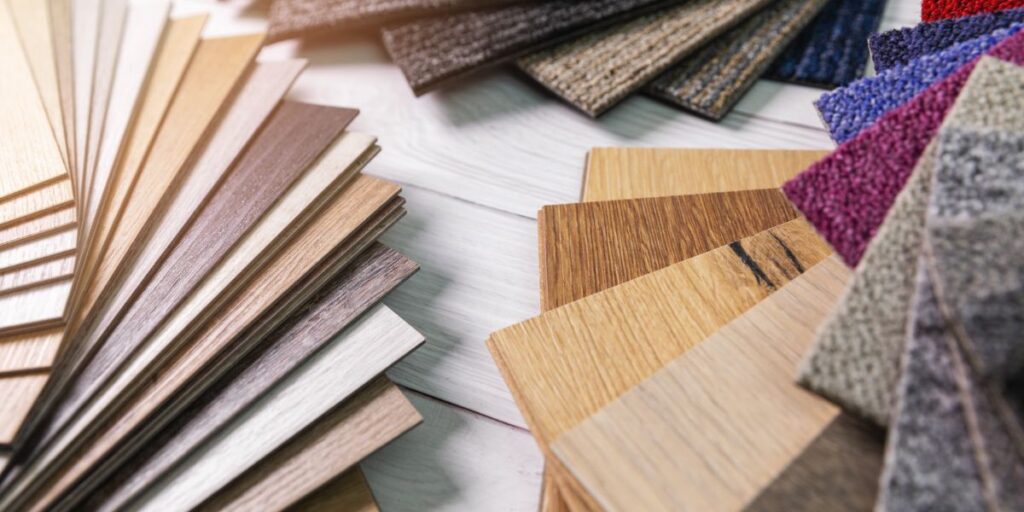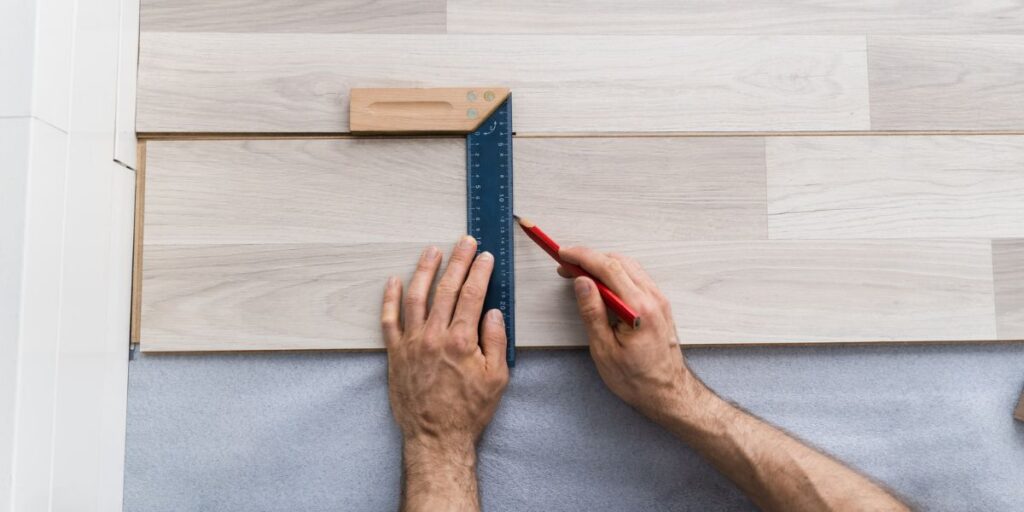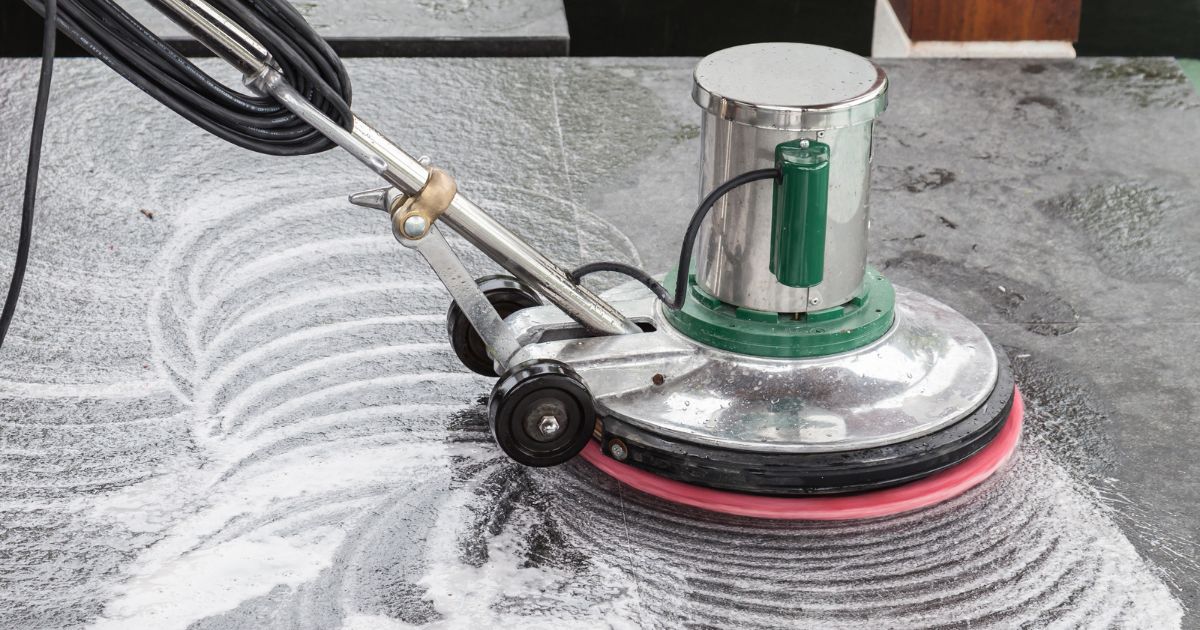
Introduction: Keeping Your Cork Floors Clean and Healthy
Cork flooring is an increasingly popular choice for homeowners all over the world. It’s eco-friendly, has a unique and visually appealing appearance, and it’s incredibly durable.
Compared to other floor options, cork floors are comfortable to walk on, warm in the winter, and cool in the summer. However, just like any other type of flooring material, cork needs proper cleaning and maintenance to last long enough.
A Brief Overview of How to Clean Cork Flooring
Cork flooring is made from the outer bark of cork oak trees that typically grow in Portugal. The bark grows back after being removed every nine years or so, making it a sustainable resource.
The harvested bark is then ground up into small pieces, which are compressed into sheets using heat and pressure. The result is a lightweight but durable material that can be used as tiles or planks.
One major advantage of cork flooring is its natural insulating properties. It helps your home stay cooler in summer by reducing heat transfer through the floor surface while also providing comfort underfoot during winter by keeping floors warm thanks to its cellular structure.
RELATED: How to Cut Laminate Flooring Without a Saw?
The Importance of Proper Cleaning and Maintenance
One crucial thing to keep in mind when installing cork floors is that they require regular cleaning and maintenance to look their best for several years after installation. While this might seem like a tedious task at first glance, it’s important not only for aesthetic reasons but also for maintaining your family’s health. Dirty or poorly maintained floors collect bacteria over time which could be harmful both for you and your loved ones if left unaddressed.
That being said, maintaining clean floors doesn’t have to be an arduous task if you follow simple procedures such as sweeping/vacuuming regularly depending on traffic levels while also mopping spills immediately before they penetrate deep into crevices beneath the surface. Stay tuned for the next section, where we’ll discuss the necessary cleaning supplies to use when cleaning cork flooring.
How to Clean Cork Flooring?
List of Necessary Cleaning Supplies
Gathering the right cleaning supplies is crucial when it comes to cleaning cork flooring. You don’t want to risk damaging the delicate surface with harsh chemicals or abrasive tools.
So, what do you need? First, you’ll want a vacuum or soft-bristled broom to sweep up any loose dirt and debris.
Next, you’ll need a mop and bucket, along with a gentle cleaner specifically designed for cork floors. You’ll want a microfiber cloth or towel to dry the floor thoroughly after mopping.
Suggest Using Eco-Friendly or Homemade Cleaners for a More Sustainable Approach
When it comes to selecting your cleaner, think eco-friendly! Many commercial cleaners contain harsh chemicals that can damage the environment and even your own health if inhaled during use.
Instead, consider using homemade cleaners made from natural ingredients like vinegar and baking soda. These options are not only better for the environment but also better for your wallet!
Another option is selecting commercial cleaners that are specifically formulated with eco-friendly ingredients, such as plant-based surfactants, instead of harsh chemicals. These products will still get the job done without negatively impacting the environment.
Gathering the right cleaning supplies is essential when it comes to maintaining your cork flooring’s beauty and durability over time. Consider opting for eco-friendly options such as homemade cleaners or commercial products made with gentle ingredients whenever possible for a more sustainable approach that benefits both you and our planet.
Sweep or Vacuum the Floor
Cork flooring is an excellent choice for homeowners who want a sustainable, eco-friendly flooring option that’s easy to maintain. However, one of the most common mistakes people make when cleaning cork floors is skipping this crucial step – sweeping or vacuuming the floor before mopping it.
Why is this step so important? Well, if you don’t remove dirt and debris from the floor before mopping it, you risk spreading that dirt around and scratching the surface of your cork flooring.
Think about it – if you mop a dirty floor, you’re essentially pushing dirt into every crack and crevice of the cork. Over time, this can lead to scratches and other damage that’s difficult (if not impossible) to repair.
To avoid this issue, make sure you sweep or vacuum your cork floors thoroughly before mopping them. This will ensure that all loose dirt and debris are removed from the surface of the floor before you start cleaning it.
Using a Soft-Bristled Broom or Vacuum Attachment
Now, when it comes to actually sweeping or vacuuming your cork floors, there are a couple of things to keep in mind. First off, never use a hard-bristled broom on your cork floors – this can cause scratches and other damage to the surface. Instead, opt for a soft-bristled broom that won’t scratch or scuff your floors.
Alternatively, you can use a vacuum with an attachment specifically designed for hardwood or laminate floors. These attachments usually have soft brushes that won’t scratch your cork flooring as they pick up dust and debris.
Another option is using a robot vacuum cleaner with rubberized wheels instead of traditional plastic ones. Robots don’t need supervision like regular vacuums do so they’re perfect for busy people who want clean homes without putting in too much work themselves!
: always sweep or vacuum your cork floors before mopping them, and make sure to use a soft-bristled broom or vacuum attachment to avoid scratching the surface of your flooring. With these simple steps, you can keep your cork floors looking beautiful and new for years to come!
Mop the Floor with Gentle Cleaner
Cork flooring is a great option for those who are looking for an eco-friendly and sustainable flooring solution. However, if you don’t take proper care of it, it can quickly develop a dull or dirty appearance.
One of the most important steps in maintaining cork flooring is mopping it regularly with a gentle cleaner. To start off, make sure that you have gathered all the necessary cleaning supplies – a mop, bucket, and pH-neutral cleaner.
Cork flooring is sensitive to acidic cleaners, so it’s important to use a cleaner that won’t harm the surface. Once you have your supplies ready, fill up your bucket with warm water and add in the recommended amount of cleaner as per instructions.
Dip your mop into the cleaning solution and wring out excess water before you start mopping. You don’t want to soak your cork floor as excess water can cause damage over time.
Start from one corner of your room and work your way across slowly, making sure that you cover every inch of your floor. Remember to rinse out your mop regularly in clean water to avoid spreading dirt or grime around.
Step-by-Step Instructions on How to Mop Cork Flooring Properly
When mopping cork flooring, remember these crucial steps:
- Gather necessary cleaning supplies
- Fill a bucket with warm water and pH-neutral cleaner
- Dip mop into the solution and wring out excess water
- Start at one corner and work across slowly
- Rinse out the mop regularly in clean water
It’s essential that you take these steps seriously if you want to keep your cork floors looking beautiful for years to come.
Creative Tip: Suggest Using a pH-Neutral Cleaner to Avoid Damaging the Cork Surface
One of the best ways to avoid damaging your cork flooring is by using a pH-neutral cleaner. Acidic cleaners are known to cause damage to cork floors, and this kind of damage can be difficult or even impossible to repair.
Using a pH-neutral cleaner ensures that your floor is cleaned effectively without causing any harm. There are plenty of eco-friendly and sustainable cleaning solutions available in the market that are designed specifically for cleaning cork floors.
Another option is to make your own cleaner at home using natural ingredients like vinegar, baking soda, or essential oils. Not only are these options better for the environment, but they’re also gentle on your floors and great for your health.
The key takeaway here is that you should avoid harsh chemicals if you want to maintain the quality of your cork flooring. By using a gentle, pH-neutral cleaning solution and following proper mopping techniques, you can keep your floors looking clean and shiny without causing any harm to their surface.
Dry the Floor Thoroughly
When it comes to cleaning cork flooring, drying is just as important as cleaning. You cannot just mop your cork floors and leave them to air dry. Cork is a porous material and can absorb water if left wet, which can lead to warping, discoloration, and even mold growth.
Therefore, it is essential to dry the floor thoroughly after cleaning. One of the best ways to dry cork flooring is by using a microfiber cloth or towel.
Microfiber cloths are incredibly absorbent and can hold up to seven times their weight in water. They are gentle on your floors and won’t scratch or damage them in any way.
Another advantage of using a microfiber cloth or towel is that they are reusable and eco-friendly. Unlike paper towels or disposable cloths, you don’t have to throw them away after one use.
Instead, you can wash them with your regular laundry and reuse them multiple times, which saves money while reducing waste. To dry your cork floors effectively, start by wringing out your microfiber cloth or towel until it’s barely damp.
Then use it to gently blot any excess water from the floor surface. Make sure you pay special attention to areas where water may have pooled, such as corners, edges, and under appliances.
Drying your cork flooring thoroughly after cleaning is critical for its longevity. Using a microfiber cloth or towel ensures that you dry every last drop of moisture without damaging your floors in the process while also helping the environment by reducing the waste produced from disposable options like paper towels.
Address Stubborn Stains and Spills
Tips for Tackling Tough Stains and Spills on Cork Flooring
We’ve all been there – a clumsy spill or stubborn stain that just won’t come out. But fear not, fellow cork floor enthusiasts, because I’m here to share with you some of the most effective tips for tackling even the toughest of stains on your beloved cork flooring.
First things first, if you notice a spill or stain on your cork flooring, act fast! The longer it sits, the harder it will be to remove.
Use a damp cloth or paper towel to blot up as much of the spill as possible before attempting any further cleaning. Now, onto the tough stains.
For red wine spills or stubborn pet stains, I highly recommend using a mixture of white vinegar and water (equal parts) to gently scrub at the stain with a soft-bristled brush. Let it sit for 5-10 minutes before wiping it away with another clean damp cloth to avoid leaving water damage.
Creative Tip: Mention Using Natural Remedies Like Vinegar or Baking Soda for Eco-Friendly Stain Removal
Not only are natural remedies like vinegar and baking soda effective in removing tough stains from cork floors, but they also offer an eco-friendly alternative to harsh chemical cleaners. Plus, chances are you already have these items in your pantry! For oil-based stains like cooking oil or lipstick, sprinkle baking soda directly onto the stain and let it sit for 5-10 minutes before gently scrubbing away with a soft-bristled brush dipped in warm water.
If needed, repeat until the stain is lifted completely. And finally – do NOT use bleach on your cork floors!
Not only can it cause discoloration and damage to your flooring, but it’s also incredibly harsh on the environment. – when facing stubborn stains and spills on your cork flooring, act fast, use gentle cleaning methods, and rely on natural remedies for the most effective and eco-friendly cleaning solutions.
RELATED: Which Way to Go: A Guide to Directional Installation of Vinyl Plank Flooring
Preventative Measures
Cork flooring may be durable, but it’s not indestructible. That means that taking preventative measures is essential if you want your cork floors to look their best for years to come. The good news is that there are plenty of things you can do to protect your floors from damage and stains.
One of the most effective ways to prevent damage is by placing mats at entrances and high-traffic areas. This will help trap dirt and debris before it has a chance to scratch or mark up your cork floors.
Just make sure you choose mats with rubber or a non-slip backing so they don’t slide around and cause a tripping hazard. Another important preventative measure is avoiding high heels on your cork floors.
Stiletto heels can leave scratches on the surface of your floors that are nearly impossible to remove. Consider asking guests to remove their shoes when they enter your home or providing house slippers as a comfortable alternative.
Creative Tip: Keep Your Pets’ Nails Trimmed
Pets can be tough on cork flooring, especially if their nails are long and sharp. Make sure you keep them trimmed regularly to avoid scratches and marks on the surface of your floors.
Frequently Asked Questions
What is the best cleaner for cork floors?
The best cleaner for cork floors is a pH-neutral, non-abrasive cleaner specifically formulated for use on cork. Avoid using harsh chemicals or excessive water, as they can damage the cork.
How do you clean a dirty cork?
To clean a dirty cork, start by sweeping or vacuuming to remove loose dirt and debris. Then, dampen a soft cloth or mop with a mild cork floor cleaner and gently wipe the surface, avoiding excessive water. Dry the cork thoroughly to prevent moisture damage.
Are cork tiles easy to clean?
Cork tiles are generally easy to clean. Regular sweeping or vacuuming to remove dirt and debris is recommended. For deeper cleaning, damp mopping with a mild cork floor cleaner is suitable. Avoid using excessive water or abrasive scrubbing.
Are you supposed to wash the cork?
It is not recommended to wash the cork with water. Excessive water can penetrate the cork and cause swelling or damage the adhesive holding the tiles together. Instead, use a damp cloth or mop with a mild cork floor cleaner for cleaning.
Can you wash the cork in water?
No, you should not wash the cork in water. Water can seep into the cork, causing it to swell, warp, or lose its adhesive properties. Damp cleaning with a suitable cleaner is a safer option.
Can cork flooring get wet?
While cork flooring is relatively water-resistant, it is not waterproof. Exposing cork to excessive water or prolonged moisture can lead to damage, such as swelling or warping. Promptly clean up spills and avoid wet mopping to prevent water from penetrating the cork.
Conclusion
Cleaning cork flooring may seem daunting at first, but with a little know-how, it’s a breeze. The key is using gentle cleaning products and avoiding harsh chemicals that could damage the surface of your floors. Remember, preventative measures are key when it comes to protecting your investment in cork flooring.
By taking steps like using mats at entrances and keeping pets’ nails trimmed, you can ensure that your floors stay looking beautiful for years to come. With these tips in mind, you’ll be well-equipped to tackle any messes or stains that come up on your cork flooring – all while maintaining its natural beauty and durability!
RESOURCE: Occupational Safety and Health Administration (OSHA): Cleaning Industry Safety and Health

